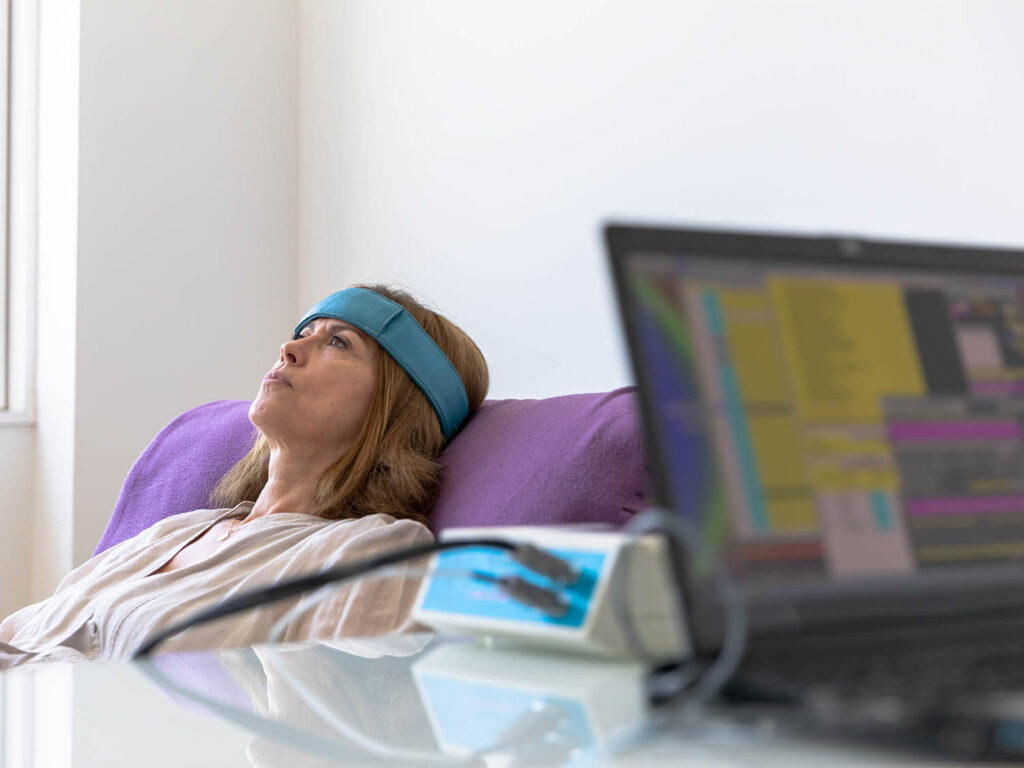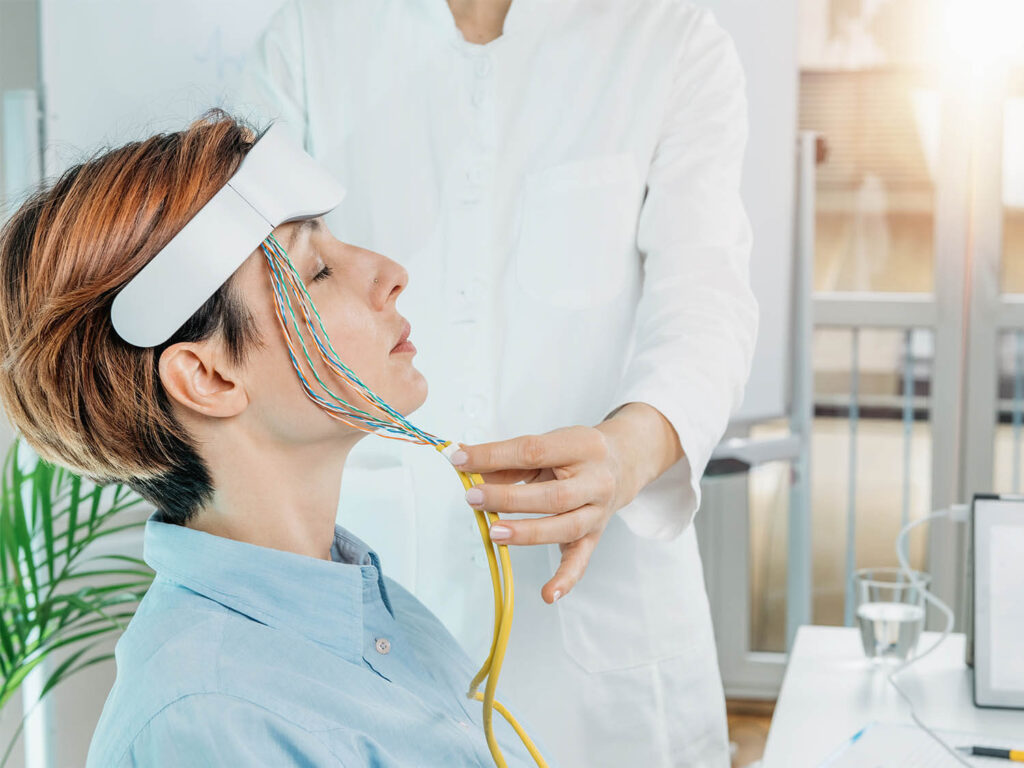How it WOrks
How Does Biofeedback Work?
Collect Biofeedback Data
Biofeedback uses electrical sensors that transmit information about your body. There are a number of different types of biofeedback data that can be collected, including: Brainwaves (EEG), Breathing, Heart Rate (ECG), including blood volume changes, Muscle Contraction (EMG), Sweat Gland Activity (EDG), Temperature
Monitor Physiological Reactions
Utilizing cues, such as changes on a monitor, a beeping sound, or a flashing light, you become aware of your physiological reactions. This allows you to control and change these behaviors in conjunction with changes in your thoughts or emotions. For example, if you struggle with migraines or headaches, biofeedback may help you identify a clenched jaw or tense muscles that are leading to your pain.
Evaluating and Training
By using biofeedback to monitor all of these physiological elements, we are able to evaluate and train many combinations of psychological and physiological behaviors that helps clients not only regulate their brain, but their body, as well. Biofeedback using thought technology can play a key role in the treatment of both psychological and physiological symptoms of various disorders, such as anxiety, ADHD, migraines, and insomnia.



